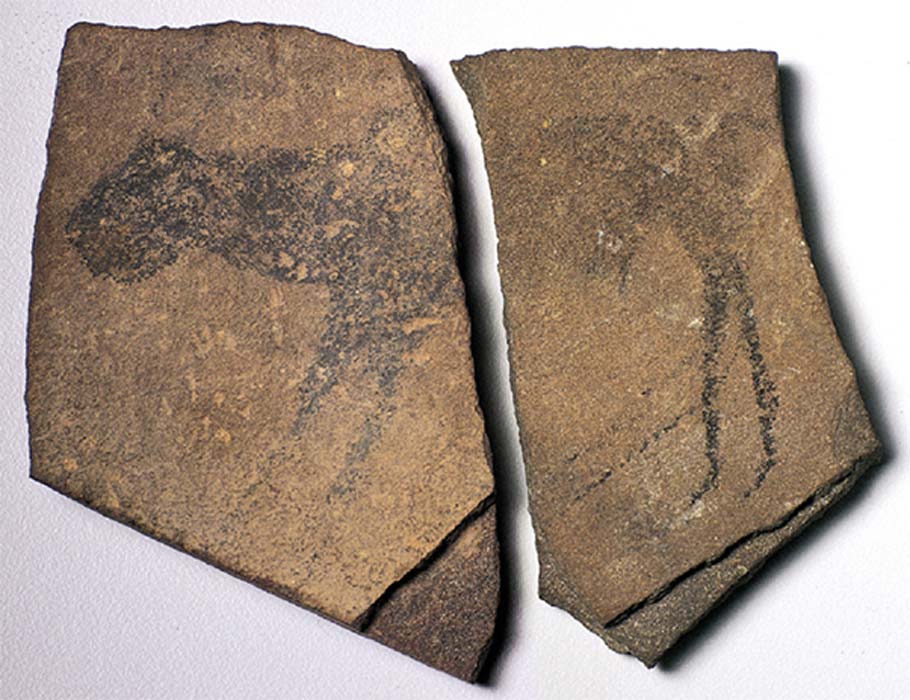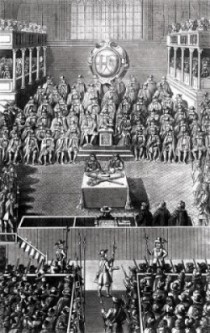via Ancient Origins by Ed Whelan

Apollo 11 Cave Stones, Namibia, Source: Courtesy of State Museum of Namibia.
Despite its name, the Apollo 11 cave in Namibia has nothing to do with space exploration. It’s the location of prehistoric art, some of the earliest examples of art in human history, and it has provided us with a unique insight into the history and development of humans.
Continue reading
==============================
via Interesting Literature
‘The Little Match Girl’ is one of Hans Christian Andersen’s most famous fairy tales for children. It is also one of his shortest, running to just a few pages. In any case, below we’ve offered a brief summary of the tale that highlights some of its salient points, before moving on to a brief commentary on, or analysis of, the key themes of ‘The Little Match Girl’. What is the meaning of this intriguing little tale?
Continue reading
==============================
via Boing Boing by David Pescovitz

A new study suggests that humans can subconsciously sense Earth's magnetic field. While this capability, called magnetoreception, is well known in birds and fish, there is now evidence that our brains are also sensitive to magnetic fields. The researchers from Caltech and the University of Tokyo measured the brainwaves of 26 participants who were exposed to magnetic fields that could be manipulated. Interestingly, the brainwaves were not affected by upward-pointing fields.
Continue reading
==============================
via the Big Think blog by Matt Davis
How the story of a statistics student being late to class became the inspiration for the protagonist of Good Will Hunting.
- One of the iconic scenes from Good Will Hunting shows Matt Damon's character anonymously solving a nigh-impossible math problem on a blackboard at the university where he works as a janitor.
- This story, while modified for the purposes of the film, actually happened.
- George Dantzig, who would later become a famous mathematician, was late to his graduate statistics class one day when he saw two statistical problems on a blackboard that he mistook for homework.
Continue reading
==============================
The celebrity poet Letitia Elizabeth Landon mesmerized a 19th-century public with hints of dark secrets.
via Arts & Letters Daily: Nicholas Dames in The Atlantic
L.E.L.: The Lost Life and Scandalous Death of Letitia Elizabeth Landon, the Celebrated “Female Byron” KNOPF
The story ended in October 1838 in modern-day Ghana, at Cape Coast Castle, a British commercial garrison and a former slave-trading post. There, the recently married 36-year-old wife of the chief British official, George Maclean, was found by her maid dead on the floor of her dressing room, an empty prescription bottle of highly toxic prussic acid in her hand. Nearby, probably in Accra, were the governor’s “country wife” and her several children; upon the new wife’s arrival from the literary precincts of London, they had been discreetly removed from the castle. Rumors would soon circulate in Britain that the governor’s previous consort was the murderer, though no evidence emerged to support those suspicions. On the desk was an unsent letter, banal and cheerful, rather than a suicide note.
Continue reading
==============================
via Boing Boing by David Pescovitz
Here's another fine development in sleep science today! A new study shows that young adults, like babies, sleep better when rocked. University of Geneva neuroscientist Laurence Bayer and colleagues built a gently rocking bed and used EEG to monitor adults' brain activity as they slept.
Continue reading
==============================
via About History
Neolithic
In 6 thousand B.C. almost simultaneously, in different extremities of Europe, a new, neolithic cultural tradition arises, associated with the cultivation of cereals, the grazing of domestic animals (cattle, goats, sheep), the extensive use of ceramics, and permanent dwellings. In central Europe, the Neolithic was associated with the culture of linear-tape ceramics, which for several centuries reached the Atlantic coast of northern France. Another Neolithic culture, La Hoguette, arrived in the eastern regions of France as the successor to the Impresso culture that emerged in the Ibero-Italian region. In the culture of La Hoguette, as in the preceding western version of the culture of impresso, sheep and goat breeding prevailed. There is evidence that around 5100 B.C. in the south of England, milk begins to be consumed and livestock appear – descendants of livestock domesticated in the Aegean region shortly after the Holocene. Apparently, these animals were brought to Britain by representatives of the culture of linear-tape ceramics. Around 4300 B.C. livestock appears in Northern Ireland, and after it appears the red deer.
Continue reading
==============================
via The National Archives Blog by Neil Johnston

The execution of Charles I on 30 January 1649 still arouses strong emotions in many people. Controversial during his lifetime, the king was both vilified and exculpated in the immediate years after his execution, and he remains a source of significant debate among scholars, students and the general public alike.
His public trial at Westminster, for crimes of treason against his own subjects, and his public execution outside the Banqueting House in Whitehall are among the defining moments of early modern British history. By any standards, these moments were shocking for many across the Stuart dominions and beyond. Nor is it surprising that generations of historians have drawn upon the dramatic events of the trial, while in recent years plays and television dramas have reinterpreted the trial for new audiences.
Continue reading
==============================
via Interesting Literature
‘To be, or not to be, that is the question’: perhaps one of the most famous lines in all of English literature, but arguably also one of the most mysterious – and one of the most misread. Hamlet’s soliloquy from William Shakespeare’s play is rightly celebrated for being a meditation on the nature of life and death, but some analyses and interpretations of the soliloquy serve to reduce the lines to a more simplistic meaning. So what does ‘To be or not to be’ really mean?
Continue reading
==============================
via Boing Boing by Mark Frauenfelder
Watching this 1987 video of two Radio Shacks (one with Madonna music in the background) makes it clear that 30 years can be a long, long time ago. Prancing Skiltaire (the person who uploaded this video) said, "This was shot in Garden Grove, CA and Buena Park Mall, CA. The person who recorded was an employee working with a regional manager who was inspecting under performing Radio Shacks they were going to renovate." I was fascinated for all 15 minutes of this spellbinding video.
Be sure to check out Prancing Skiltaire's other amazing videos, like the Equicon Costume Presentation (1988):
And the first Furry Convention! (1989):
No comments:
Post a Comment